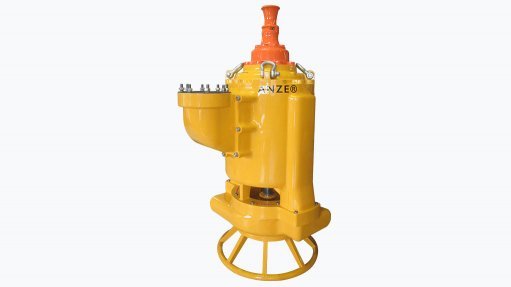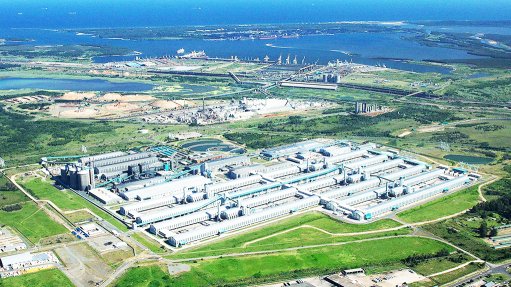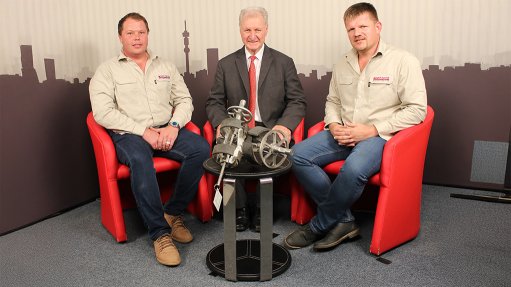As load shedding remains a reality in SA, microgrids can manage backup energy systems effectively and efficiently
This article has been supplied.
By: Anoop Hariparsad - Digital Energy Business Unit Leader at Schneider Electric
Load shedding remains a significant challenge in South Africa, making backup systems such as solar panels, batteries, or generators essential. A microgrid can manage these systems effectively, making adjustments based on a site's demand or specific application needs. The system can automatically switch between solar power, battery backup and generator power as per user preferences programmed into the system.
In South Africa, microgrids – particularly those integrating renewable energy sources – have contributed to substantial carbon emission reductions. For instance, the installation of microgrids in rural areas has led to a reduction of approximately 30 000 tons of CO2 annually.
Microgrids are also crucial for sustainability and minimising carbon footprints. Many blue-chip companies and large corporations, particularly those with global parent organisations, face pressure to uphold sustainability and lower carbon emissions. Microgrids help by switching between alternative energy sources, such as solar and wind generation and battery backup, to reduce the carbon footprint.
Tested and validated architecture
Microgrid architectures that have been tested, validated and backed by white papers and proven concepts are available in the market. This facilitates the implementation of these architectures on-site since extensive background work, research and development have already been conducted.
By leveraging these tested and validated architectures, solution providers can drive resilience, reduce downtime and minimise reliance on gen sets, ensuring a more reliable and efficient energy solution for a customer’s site.
As a result, building owners and facilities managers can ensure that their buildings’ energy demands are met efficiently, even during power disruptions, by leveraging the capabilities of modern microgrid solutions.
When considering energy usage, especially in the context of load shedding or power outages, it's important to take into account peak values and times for solar energy. By integrating data from a weather app, the system can predict solar yield based on upcoming weather conditions. This AI-driven approach allows the microgrid to optimise energy sources for a site.
Managing power supply
Additionally, in the case of insufficient solar yield and battery power, the system can start a generator. If the total energy supply is still inadequate, it can shed non-essential loads, such as certain lighting areas, to maintain essential operations.
The benefits of relying on smart microgrid solutions include:
- Optimised Energy Use: The system ensures that the most efficient energy sources are used, reducing reliance on generators.
- Cost Savings: By minimising generator use and optimising solar and battery power, operational costs are reduced.
- Resilience: The microgrid enhances resilience by maintaining power supply during load shedding and optimising energy sources.
Driving sustainability
Microgrids also play a significant role in driving sustainability, as transitioning to cleaner energy means it is essential to consider the sources of energy being utilised. Relying on the grid often involves burning coal, whereas generator sets operate on diesel, both of which contribute to carbon emissions and pollution. Additionally, diesel fuel can be quite expensive.
However, microgrid systems can facilitate the use of alternative energy sources. For example, if the goal is to reduce a site’s carbon footprint by 20%, the system will prioritise clean energy sources like wind, solar and battery backups. It will use these clean energy sources first before resorting to the grid or diesel gen-sets, ensuring efficient energy use and cost savings.
Best available energy sources
This prioritisation ensures that the best available energy sources are used based on a particular site's demand. The system can also shed non-essential loads during load shedding, maintaining essential operations while optimising energy use.
By using clean energy sources, the system helps reduce carbon emissions and efficient energy optimisation leads to lower operational costs. Ultimately, the system ensures a reliable power supply by switching between energy sources based on availability and demand. This approach ensures that a site's energy needs are met efficiently and sustainably, even during power disruptions.
The implementation of microgrid systems presents a transformative solution to the ongoing challenges of load shedding and unreliable power supply faced by South Africans. By leveraging alternative energy sources such as solar, wind, and battery backups, microgrids not only enhance energy resilience but also contribute significantly to sustainability goals by reducing carbon footprints.
Article Enquiry
Email Article
Save Article
Feedback
To advertise email advertising@creamermedia.co.za or click here
Press Office
Announcements
What's On
Subscribe to improve your user experience...
Option 1 (equivalent of R125 a month):
Receive a weekly copy of Creamer Media's Engineering News & Mining Weekly magazine
(print copy for those in South Africa and e-magazine for those outside of South Africa)
Receive daily email newsletters
Access to full search results
Access archive of magazine back copies
Access to Projects in Progress
Access to ONE Research Report of your choice in PDF format
Option 2 (equivalent of R375 a month):
All benefits from Option 1
PLUS
Access to Creamer Media's Research Channel Africa for ALL Research Reports, in PDF format, on various industrial and mining sectors
including Electricity; Water; Energy Transition; Hydrogen; Roads, Rail and Ports; Coal; Gold; Platinum; Battery Metals; etc.
Already a subscriber?
Forgotten your password?
Receive weekly copy of Creamer Media's Engineering News & Mining Weekly magazine (print copy for those in South Africa and e-magazine for those outside of South Africa)
➕
Recieve daily email newsletters
➕
Access to full search results
➕
Access archive of magazine back copies
➕
Access to Projects in Progress
➕
Access to ONE Research Report of your choice in PDF format
RESEARCH CHANNEL AFRICA
R4500 (equivalent of R375 a month)
SUBSCRIBEAll benefits from Option 1
➕
Access to Creamer Media's Research Channel Africa for ALL Research Reports on various industrial and mining sectors, in PDF format, including on:
Electricity
➕
Water
➕
Energy Transition
➕
Hydrogen
➕
Roads, Rail and Ports
➕
Coal
➕
Gold
➕
Platinum
➕
Battery Metals
➕
etc.
Receive all benefits from Option 1 or Option 2 delivered to numerous people at your company
➕
Multiple User names and Passwords for simultaneous log-ins
➕
Intranet integration access to all in your organisation





















